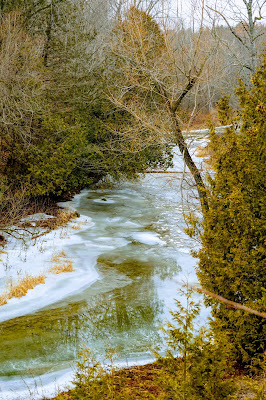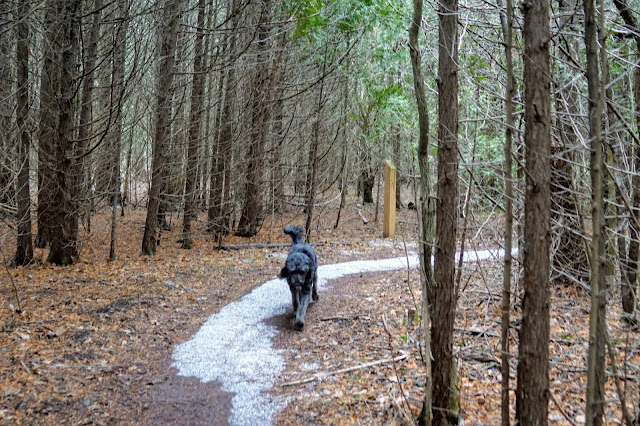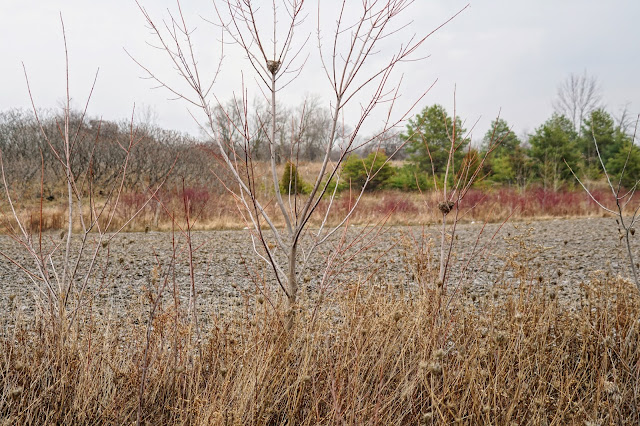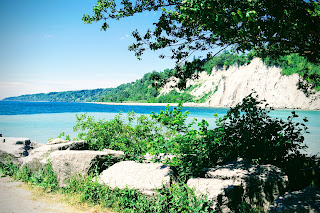Bob Hunter Memorial Park - Monarch Trail

The park is located just north of the Toronto Zoo at Reesor Road and 14th Ave in Markham. Four trails are accessible from the main parking area on 14th Ave in Markham. See a previous blog about the Reesorway and Tanglewood trails. This blog documents the Monarch Trail.
Monarch Trail
The Monarch trail takes you through reclaimed wetlands, a cedar forest and white pine stand next to the Little Rouge River. The trail is 5.5 km in length and is easy to follow, despite the lack of signs. If you use MapMyWalk, follow our trail: https://www.mapmywalk.com/workout/5246779414.

Parking
There is a large parking lot, toilets, seating area, and signage at the park's main entrance: 7277 14th Ave, Markham.
Trailhead
Start the hike on the trail behind the cabin.
Follow the yellow signs for Monarch Trail.
The path is wide, but is icy in the winter. The first section crosses a private driveway, so be aware of oncoming traffic.
Wetlands
The first section of the trail takes you through are wetlands that are being reclaimed from farmland. A sign in the area describes the importance of wetlands.
I found the information so important that I copied it from the sign.
Over the years many of the wetlands. such an marshes and vernal pools, in the Rouge watershed have been drained, filled and used as farmland and urban expansion. Today, wetlands cover less than one per cent af the entire watershed. This is far from what is needed to support its fundamental ecological functions.
Wetlands serve an nature's stopover -- providing important nesting and breeding grounds for migrating birds. They are nature's nursery -- breeding sites for many beneficial frog, salamander, fish and insect species. They are nature's sponge -- regulating the water levels in our rivers and streams, evening out the highs and lows by storing water after heavy rains and slowly releasing it during dry periods. This reduces the risks of flash flooding and erosion, while maintaining waterflow in our creeks. Also, wellands are nature's water purifier -- filtering nutrients, breaking down animal wastes and settling out suspended sediments This is important as the Rouge is an urban watershed, vulnerable to many impurities, from road salt to fertilizers and pesticides
Every spring, the wetlands of Bob Hunter Memorial Park attract a wide variety of migrating bird visitors. Among these returning guests, you are most likely to see the familiar Canada goose (Brain canadensis), and mallard (Anas platyrhynchos), the smaller blue-winged teal (Anas discom, and the chatty red-winged black bird (Agelis phoices)
Also keep a lookout for the great blue heron (Ardea herodias) stalking frogs and small fish,
the great egret (Arda alba) with its snowy white plumage, and the noisy marsh wren (Cistothonis palustris) who sings all day and much of the night.


First Bridge

Signage

Forest

Little Rouge River





















This comment has been removed by a blog administrator.
ReplyDelete